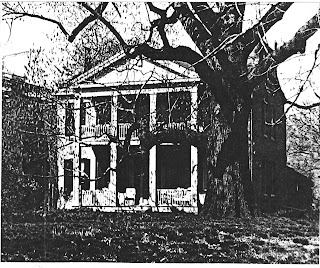
Pastel, 12x14, Portrait Woman looking Right with Blue Eyes, Unsigned by Dick Burg, circa mid 50's, Courtesy of Peter Burg.







 I remember feeling very privileged when I was young that my father worked for Hallmark. It meant that we could go into Hollywood and attend the Hallmark Radio Show. I remember going to see a rendition of Song of the South with Luanne Patton and Bobby Driscoll. We stood outside afterward and got to meet them and get their autograph.
I remember feeling very privileged when I was young that my father worked for Hallmark. It meant that we could go into Hollywood and attend the Hallmark Radio Show. I remember going to see a rendition of Song of the South with Luanne Patton and Bobby Driscoll. We stood outside afterward and got to meet them and get their autograph.









 For the most part Dick Burg was a conservative man. Rarely prone to extremes. His classification as far as style would be mostly realism and post-impressionism. That also would include stylized figure and a nostalgic interpretation regarding the architectural depiction of buildings such as barns and houses. The title, ”Twentieth Century California Painter focusing on composition and color theory would suit him well.
For the most part Dick Burg was a conservative man. Rarely prone to extremes. His classification as far as style would be mostly realism and post-impressionism. That also would include stylized figure and a nostalgic interpretation regarding the architectural depiction of buildings such as barns and houses. The title, ”Twentieth Century California Painter focusing on composition and color theory would suit him well.
 I have to say, this one puzzles me. I’ve been to Ladue, a suburb of St Louis, and there are no shacks what so ever. You might say it is the Beverly Hills of St. Louis. I mean we are talking mansions, estates, grand colonial style gargantuan houses and lots the size of football fields. I am assuming Dick is trying to be humorous or he is giving us a sight of Ladue back when Martin Hanley arrived.
I have to say, this one puzzles me. I’ve been to Ladue, a suburb of St Louis, and there are no shacks what so ever. You might say it is the Beverly Hills of St. Louis. I mean we are talking mansions, estates, grand colonial style gargantuan houses and lots the size of football fields. I am assuming Dick is trying to be humorous or he is giving us a sight of Ladue back when Martin Hanley arrived. All Paintings have their birth somewhere. Here is a typical preliminary sketch, perhaps dealing with composition or just an idea for a painting. This sketch was found in one of Dick’s books of how to draw heads. I have matched it up with a finished painting in Dick’s more mature stage. They both deal with an inward center perspective with the main activity based in the center foreground.
All Paintings have their birth somewhere. Here is a typical preliminary sketch, perhaps dealing with composition or just an idea for a painting. This sketch was found in one of Dick’s books of how to draw heads. I have matched it up with a finished painting in Dick’s more mature stage. They both deal with an inward center perspective with the main activity based in the center foreground.
 What aspects of an artist come through their art? The portrait of this lady is awash in rhythm. My father grew up in roaring twenties and the swing era of the thirties and forties. He was a master of the Lindy Hop, a swing dance craze, whose name sake was Charles Lindbergh ,of The Spirit of St. Louis fame. In fact there is a Lindbergh Blvd that runs near Ladue. Dick loved to dance. He taught Patty and Laura how to dance. He enjoyed big band music and there was always dancing to the radio in the Northfield and Muskingum houses in Pacific Palisades.
What aspects of an artist come through their art? The portrait of this lady is awash in rhythm. My father grew up in roaring twenties and the swing era of the thirties and forties. He was a master of the Lindy Hop, a swing dance craze, whose name sake was Charles Lindbergh ,of The Spirit of St. Louis fame. In fact there is a Lindbergh Blvd that runs near Ladue. Dick loved to dance. He taught Patty and Laura how to dance. He enjoyed big band music and there was always dancing to the radio in the Northfield and Muskingum houses in Pacific Palisades. Hanley House, 36x48, Oil on Canvas, Framed, Signed By Dick Burg, Courtesy of The City of Clayton, MO.
Hanley House, 36x48, Oil on Canvas, Framed, Signed By Dick Burg, Courtesy of The City of Clayton, MO.
 Hanley House as viewed in the early 1980's
Hanley House as viewed in the early 1980's Historic Hanley House 2010 with Bob Pommer and Sarah Umlauf.
Historic Hanley House 2010 with Bob Pommer and Sarah Umlauf.



 Here are just a portion of the books that Dick had in his art library. The others were distributed amongst his children.
Here are just a portion of the books that Dick had in his art library. The others were distributed amongst his children.


